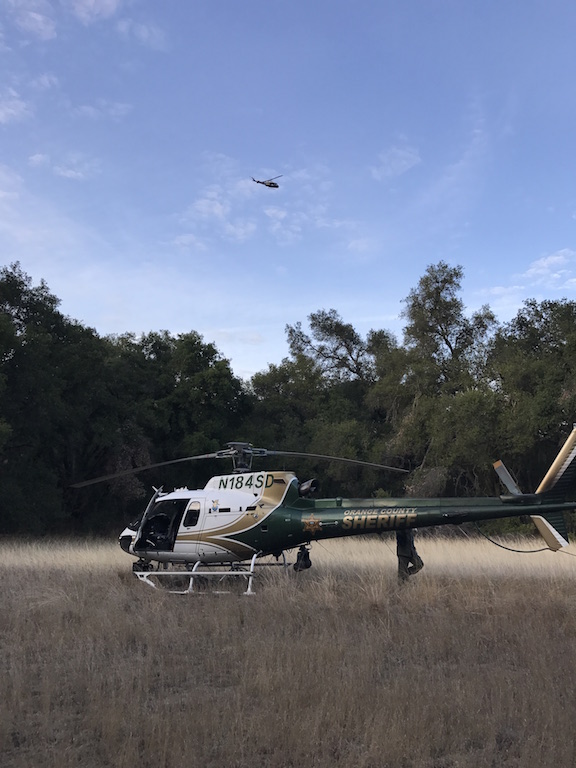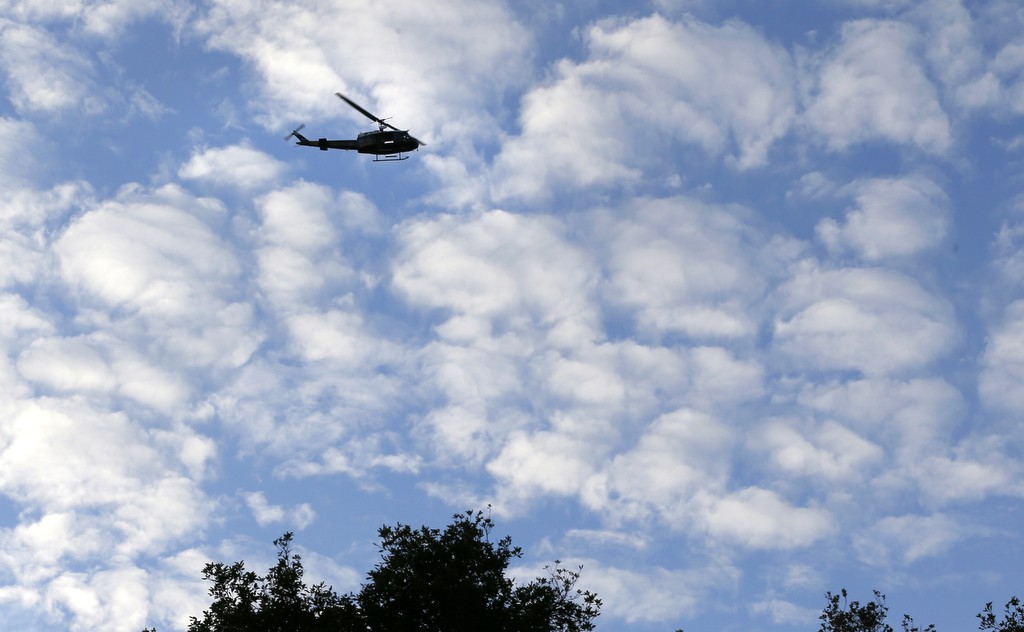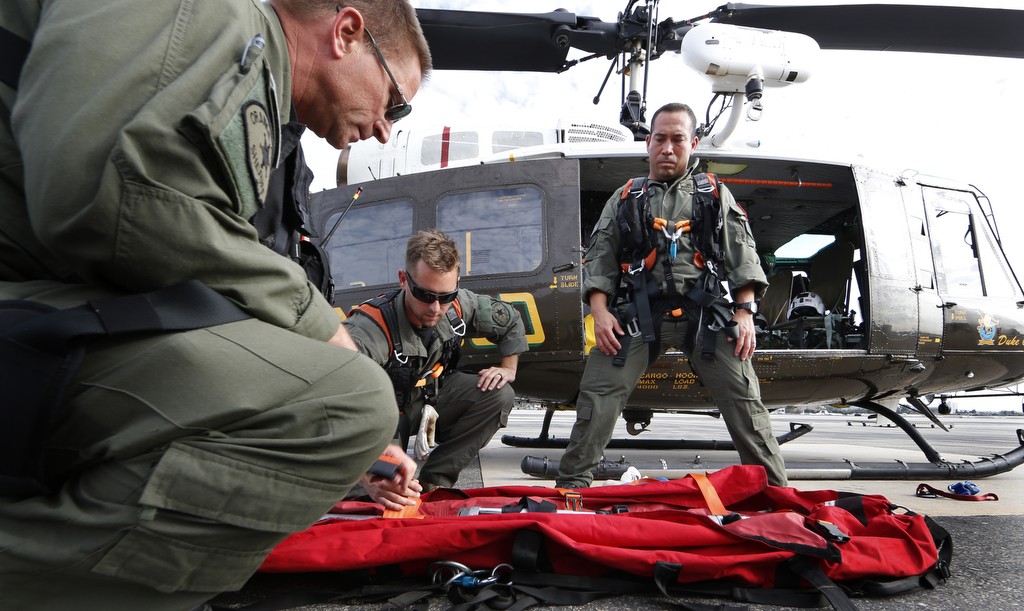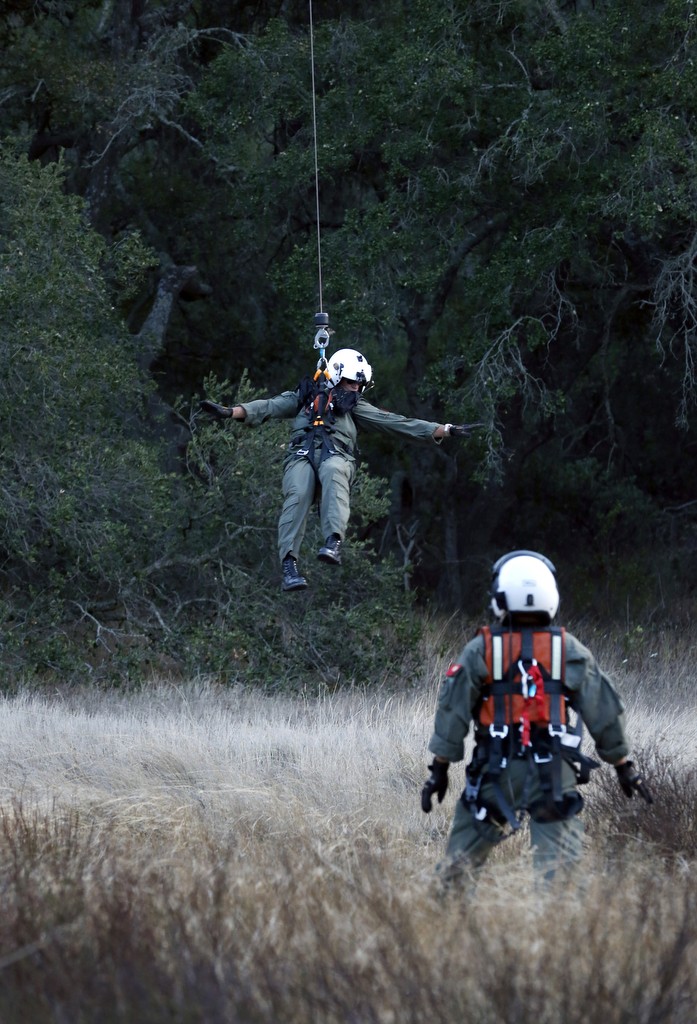The sun was setting and so was their 12-hour shift.
The pilots of Orange County Sheriff’s Department helicopter Duke 1 were descending on John Wayne Airport July 26 when the call came through: A 4-year-old boy reported missing from a birthday party at a Santa Ana park.
The pilots could have opted to go for a shift change with the night crew that was ready to go, but instead they answered the call.
Duke circled the area around the park, blasting the boy’s description out on the PA system.
A quarter of a mile from the park, residents heard the announcements and noticed a man with a young boy matching the description.
They confronted the man, who took off running after being questioned. The residents chased him and detained him until Santa Ana police arrived.
The man told police after a 90-minute interview he intended to sexually assault the young boy and went into detail about his plans to harm the pre-schooler.
The boy was safely returned to his family and the man now is facing a possible life sentence for kidnapping with intent to commit lewd acts on a child.
It took three minutes for Duke 1 to get on the scene — three minutes that saved the little boy from a violent attack and possibly also his life.
“That was one of those calls where we all felt like this is why our unit really makes a difference,” said Sgt. Bill Fitzgerald, pilot and supervisor of the unit. “That boy was found because of the helicopter.”
Looking for missing children in public spaces is just one type of call that summons the OCSD’s Aviation Unit to the skies, but the Duke fleet gets tapped for all types of calls from mountain hiker rescue missions to high-speed pursuits.
“We go on a lot of pursuits to catch the bad guy, and when we’re doing active patrol Duke can help deter crime,” Fitzgerald said. “But the big thing you can’t put a value on is reducing the risk for the officers and deputies on the ground.”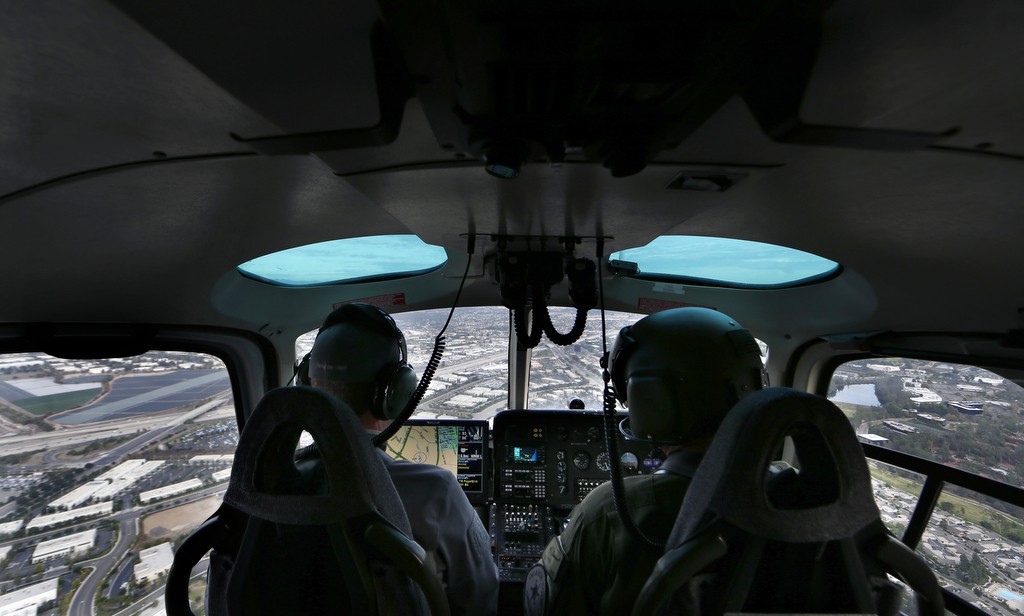
Force Multiplier
The OCSD Aviation Unit, launched in 1985, is made up of three patrol helicopters, calls signs Duke 1, Duke 2 and Duke 3. The fleet also consists of two rescue UH-1H Huey’s, call sign Duke 6, stationed at John Wayne Airport. The second rescue Huey arrived on November 2.
The unit covers the 13 Orange County cities that contract with the sheriff’s department as well as the Santa Ana PD, but Duke also can be called to assist on major regional calls, Fitzgerald said.
The crew has been known to fight fires, rescue swimmers stranded on rocks in heavy surf, and hoist injured hikers from deserted trails.
The 28-person unit includes pilots, tactical flight officers, rescue paramedics and hoist operators. A patrol unit is manned 24 hours a day, with rescue crews scheduled mostly for weekends and holidays.
“Duke 6 always has a crew on-call so if we need them, they can come out,” Fitzgerald said. “But during the busier times, like weekends, we have a team ready to go.”
So far this year, the Aviation Support Unit has fielded more than 1,500 calls in Orange County, and they are often first on scene.
Flying at 1,000 feet for general patrol or 500 feet if on an active call, the crew relies on Duke’s high-tech gear to work their magic.
Its most-used equipment are a program called Geo-point that locks a high-definition camera on a target, a FLIR thermal camera used at night to pick up heat signatures, a PA system to communicate to people on the ground and mapping software to easily navigate the county.
“We do whatever we need to do to get the job done,” said OCSD pilot Erik Baum. “We are a huge benefit to the deputies on the ground and can search large areas very quickly. We are what they call a force multiplier.”
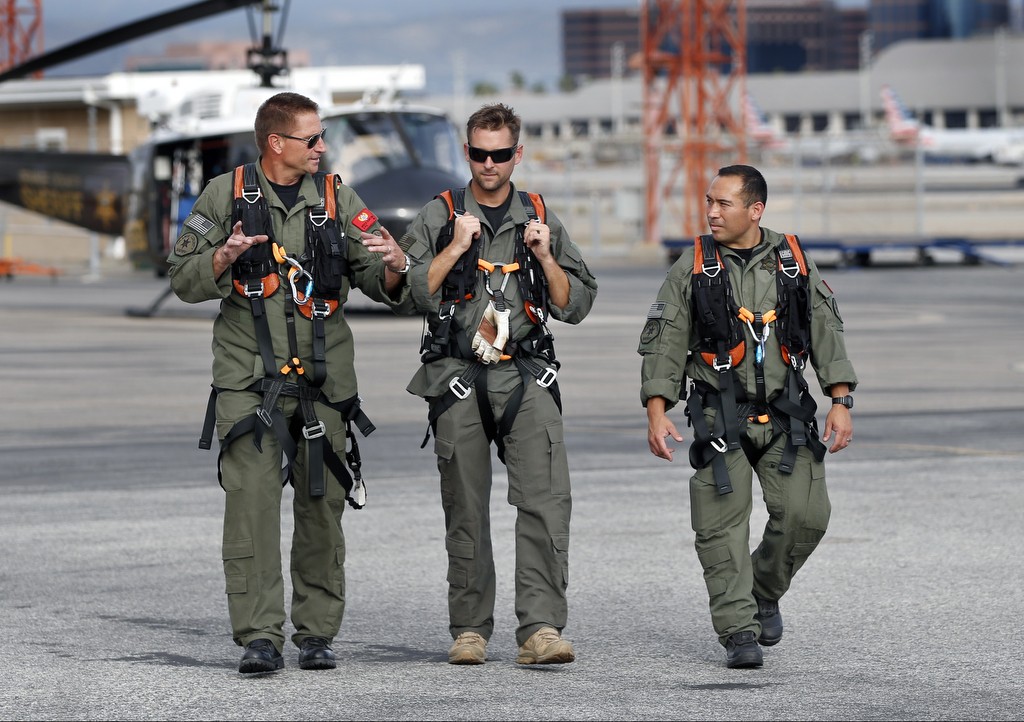
Jim Slikker, Alexander Bollhagen and Eddie Ochoa, from left, gear up for a training exercise on the Orange County Sheriff’s Search and Rescue helicopter.
Photo by Christine Cotter/Behind the Badge OC
Live action
The hum of a Duke helicopter often is a welcome sound for injured hikers or deputies on the search for a felon, but that’s not true for everyone.
Despite flying the quieter ASTAR helicopter at higher altitudes than OCSD pilots flew in the program’s earlier years, some still have questions when they hear Duke overhead.
In Yorba Linda, Duke’s presence often solicits a string of digital comments on a community Facebook forum that range from genuine curiosity to frustration.
Why is that helicopter flying over here again? What’s going on in our neighborhood? We have a right to know what’s happening.
Resident Justin Lasley, 40, an active member of his community’s neighborhood watch, wanted to get answers for his neighbors and the OCSD flight crew was game to help.
On a recent Saturday, Lasley went for a ride-along on Duke 1 to get a first-hand look at why the aviation unit is an asset to the community.
“There is a lot of confusion about what they do,” said Lasley, who lives in Yorba Linda with his wife and two children. “I am hoping this will show why the aviation unit is a valuable resource. I’m here to really get a better understanding of what they do and I want to share that with the community.”
By the end of the evening, Lasley would have much to share.
He first was treated to a tour of the unit and a highlight video that showcased some of the more exciting calls Duke responds to — foot pursuits, car chases, K-9 bites, and the like.
Using the FLIR camera, Duke quickly located suspects hiding in thick brush, sheds or other tight spaces, and led ground units right to them.
And while Duke is impressive when called to take flight, the crew has logged some notable arrests when there are no calls at all.
“We do what is called active patrol,” Fitzgerald said. “If we receive a report of an increase in criminal activity, we can go out and patrol that area.”
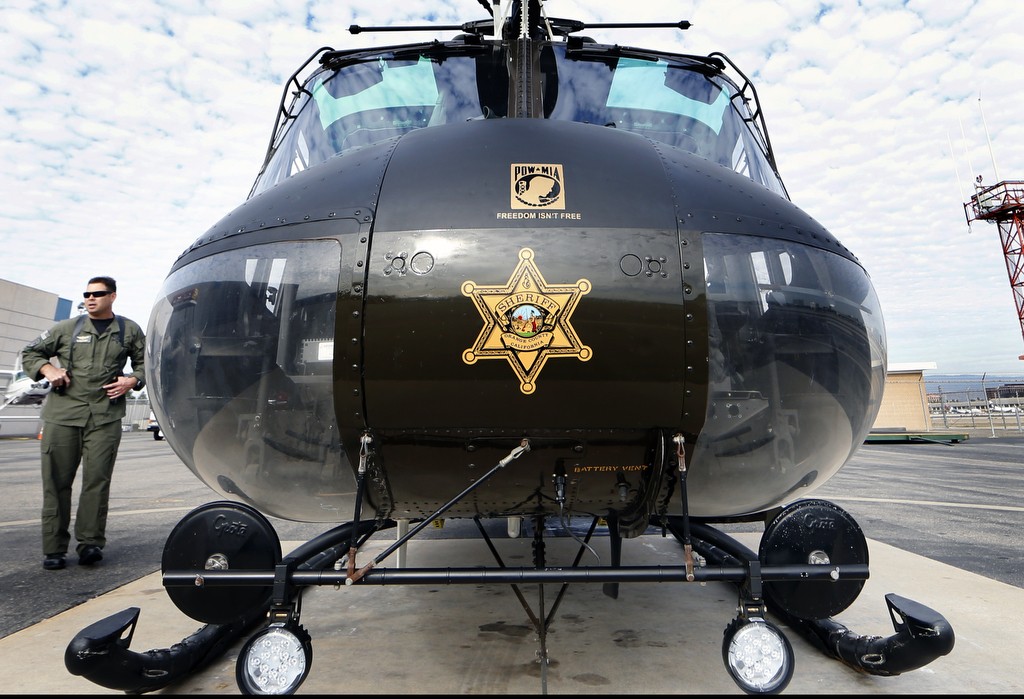
OCSD’s Sgt. Bill Fitzgerald, prepares for a training exercise with the Orange County Sheriff’s Search and Rescue helicopter.
Photo by Christine Cotter/Behind the Badge OC
For about eight hours of their shift, the helicopter crew is in the air. They vary which cities they patrol and don’t stick to any kind of regular schedule — and for good reason.
“We don’t want any criminals knowing when we might or might not be flying through their city,” Fitzgerald said.
The strategy proved successful in a recent Anaheim Hills case in which Duke helped nab a prolific commercial burglar that was stealing from railroad cars.
On a routine patrol ride, the FLIR camera picked up a heat signature on a car parked next to the railroad tracks and the crew called it in.
Deputies responded, arrested the suspect and recovered dozens of boxes of high-end speakers. After the arrest, the railway company reported they had been after the suspect for years.
“That was all because a TFO picked up on something that looked off,” Fitzgerald said.
Picking up on suspicious circumstances is something every member of the crew is well-trained for because although they have logged thousands of hours in the air, they are deputies first.
“It would be much harder to train a pilot to become an officer, rather than the other way around,” Fitzgerald said. “Yes, they would know how to fly, but teaching them what to look for and how to communicate would be extremely difficult.”
(Fitzgerald, a former Army pilot had previous military flight experience. Every OCSD pilot obtains his or her private and commercial flight licenses before going through an exhaustive sheriff’s pilot training.)
After the tour and quick rundown of Duke’s operations, it was up in the air for Lasley.
Duke 1 and Duke 6 first flew out to Chiquita Springs to run several training scenarios before Duke 1 lifted off for a patrol flight.
Two calls kept Duke in the air early Saturday evening — the first a search for a suspect that lasted a few minutes before dispatchers pulled the flight crew to a burglary in progress a few miles away.
In minutes, Duke locked its camera on the house and the pilots saw three suspects leaving the residence. The crew cast a spotlight on the suspects’ cars, holding their location until patrol units arrived to take over the call.
Had it been a few minutes longer, the suspects would have been long gone — proving again what the Duke crew already knows: Saving time means catching suspects, stopping crime and, sometimes, saving lives.

Yorba Linda resident Justin Lasley, 40, up in Duke 1 on the way to Chiquita Springs to observe the OCSD Aviation Support Unit in action. Photo courtesy Justin Lasley.

A Duke 6 crew member waits to be hoisted up by the Orange County Sheriff’s Search and Rescue helicopter during a training session in the Cleveland National Forest.
Photo by Christine Cotter/Behind the Badge OC
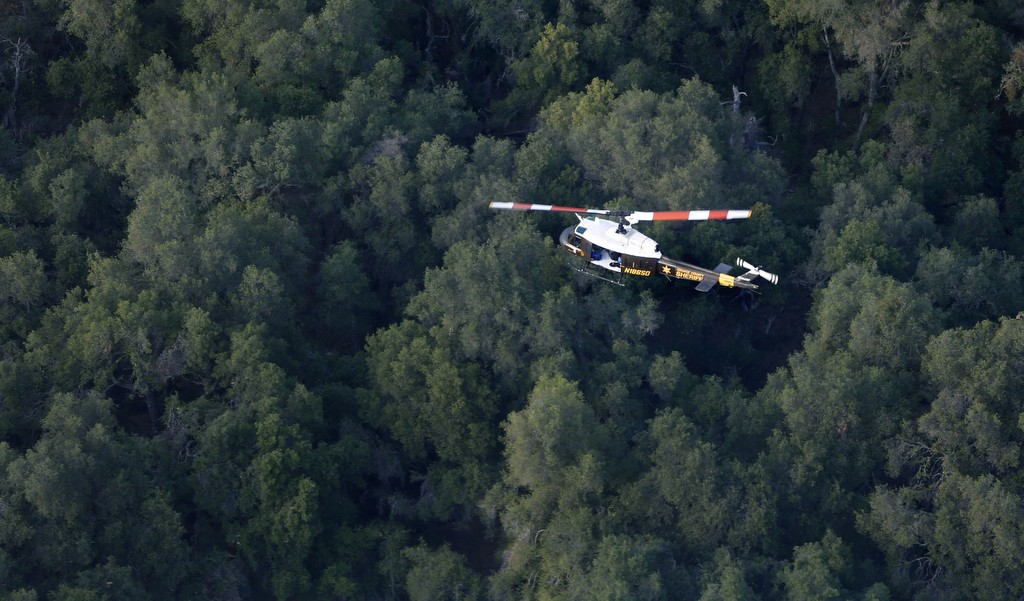
The Orange County Sheriff’s Search and Rescue helicopter flies over the Cleveland National Forest on a recent training mission.
Photo by Christine Cotter/Behind the Badge OC
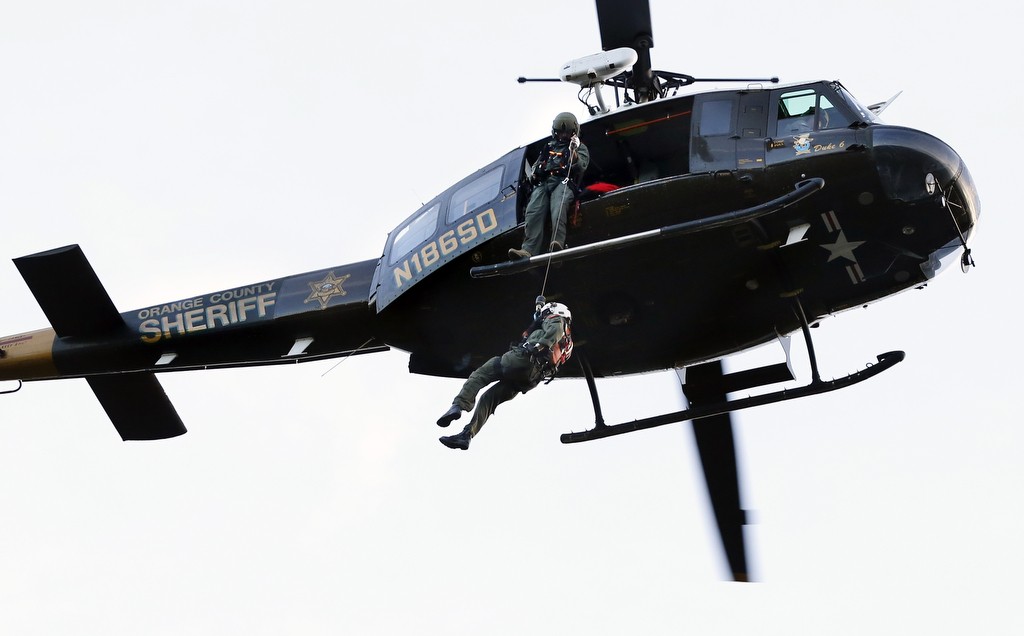
The crew of Duke 6, OCSD’s rescue helicopter, runs training scenarios in Chiquita Springs. Photo by Christine Cotter/Behind the Badge OC
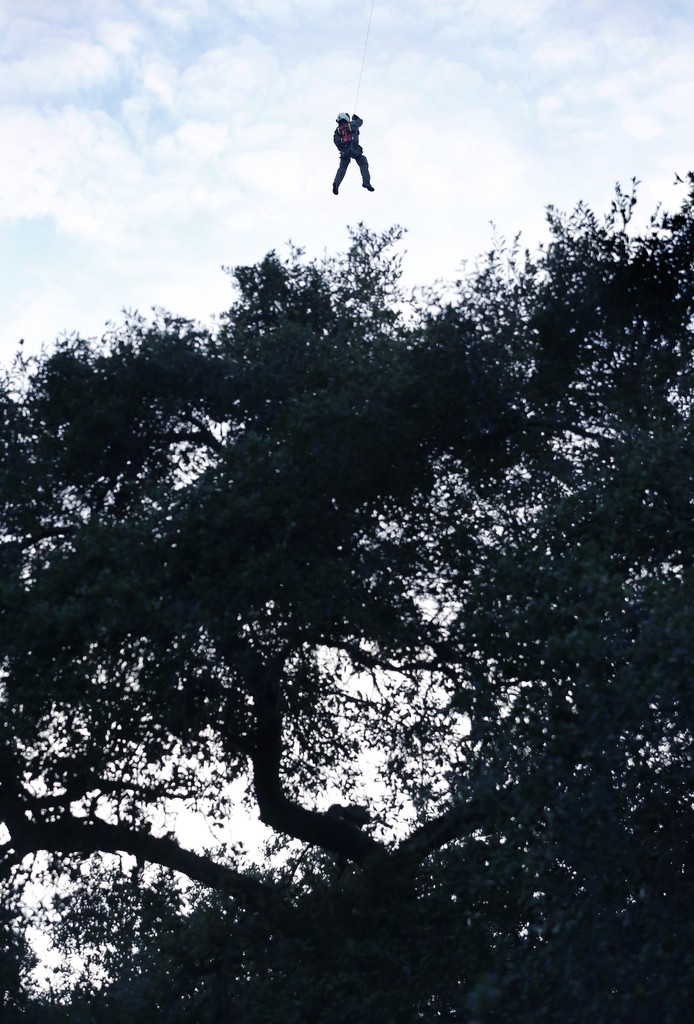
The crew of Duke 6 runs several training scenarios in the Cleveland National Forest.
Photo by Christine Cotter/Behind the Badge OC
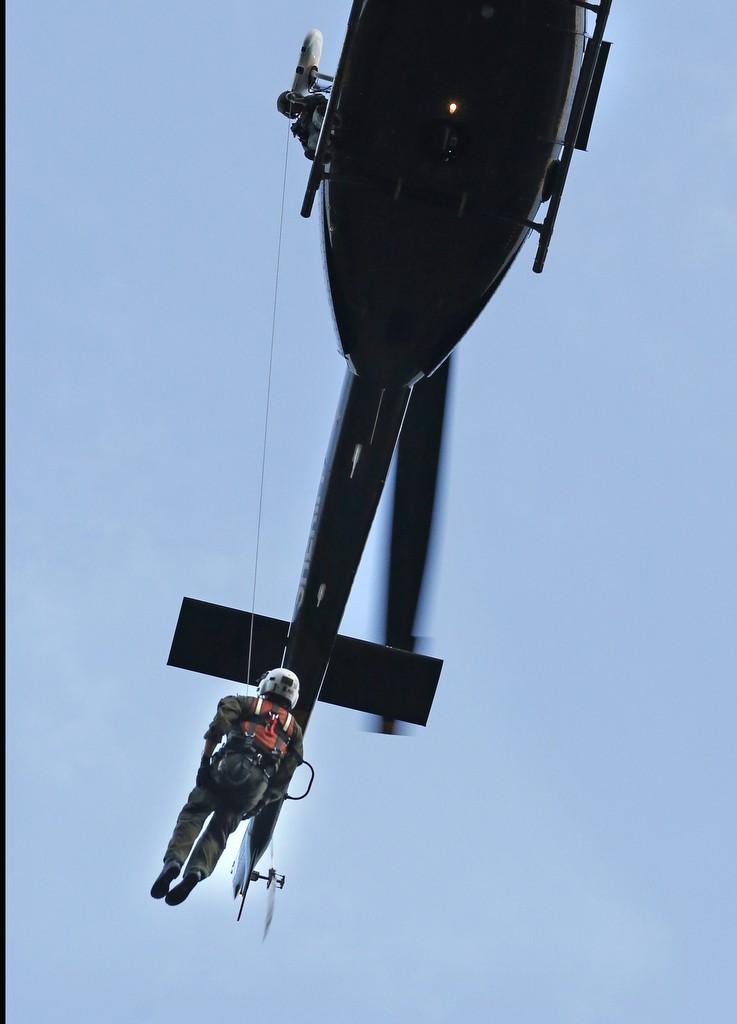
One of the crew members of Duke 6 is lowered down from the Orange County Sheriff’s rescue helicopter during a training session in the Cleveland National Forest.
Photo by Christine Cotter/Behind the Badge OC.

The crew of Duke 6 headed to Chiquita Springs on a recent Saturday to train on hoist operation with Duke 6, the OCSD’s rescue helicopter.
Photo by Christine Cotter/Behind the Badge OC

Sgt. Bill Fitzgerald gets ready for a training exercise with the Orange County Sheriff’s Search and Rescue helicopter.
Photo by Christine Cotter
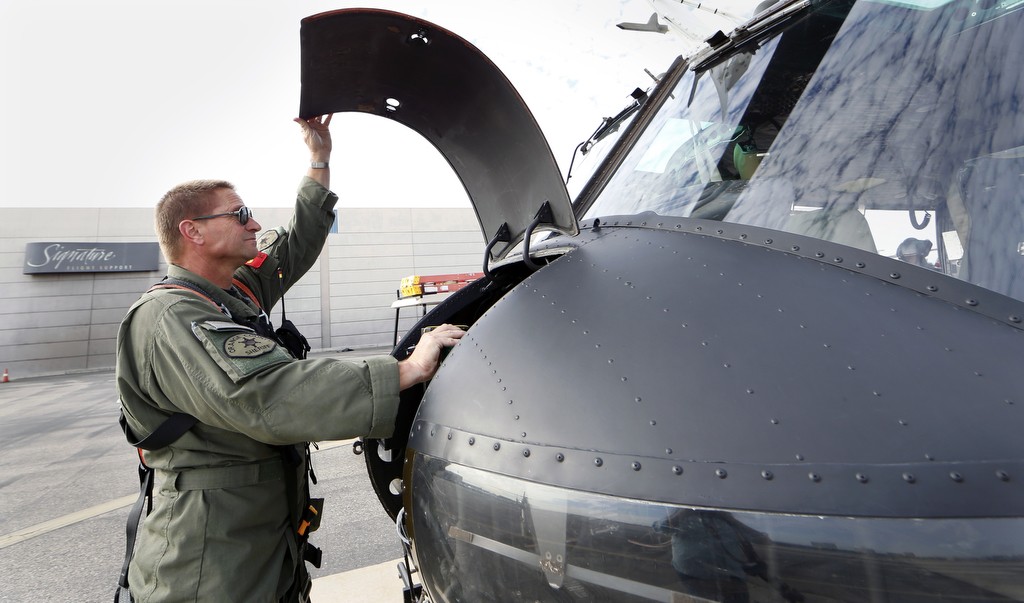
Rescue paramedic Jim Slikker gets ready for a training exercise with the Orange County Sheriff’s rescue helicopter.
Photo by Christine Cotter/Behind the Badge OC

Sgt. Bill Fitzgerald, operations sergeant and pilot for the Orange County Sheriff’s Department gets ready for a training exercise with the Orange County Sheriff’s Search and Rescue helicopter crew.
Photo by Christine Cotter/Behind the Badge OC
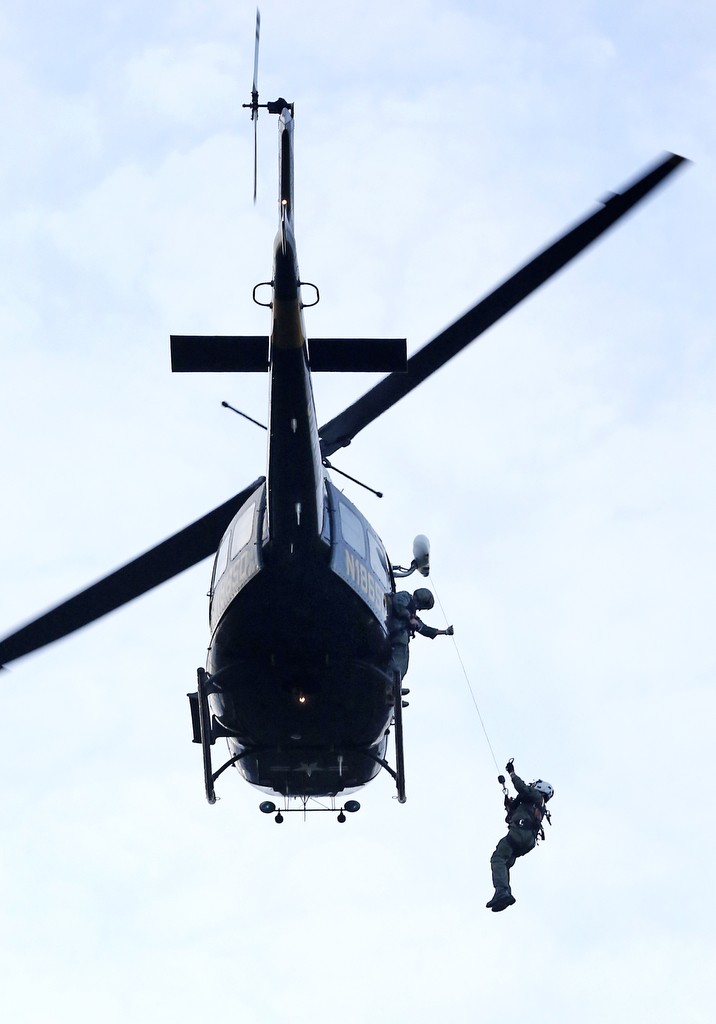
The crew of Orange County Sheriff’s Search and Rescue helicopter, Duke, 6 train on hoisting operations in Chiquita Springs.
Photo by Christine Cotter/Behind the Badge OC
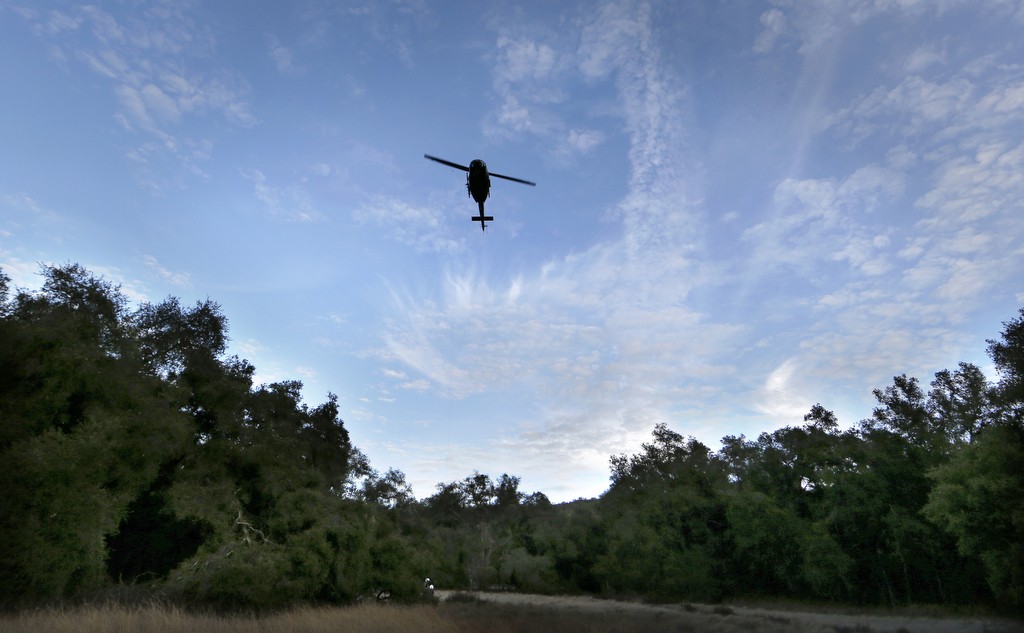
The Orange County Sheriff’s Search and Rescue helicopter hovers over a clearing in the Cleveland National Forest.
Photo by Christine Cotter/Behind the Badge
 Behind the Badge
Behind the Badge

